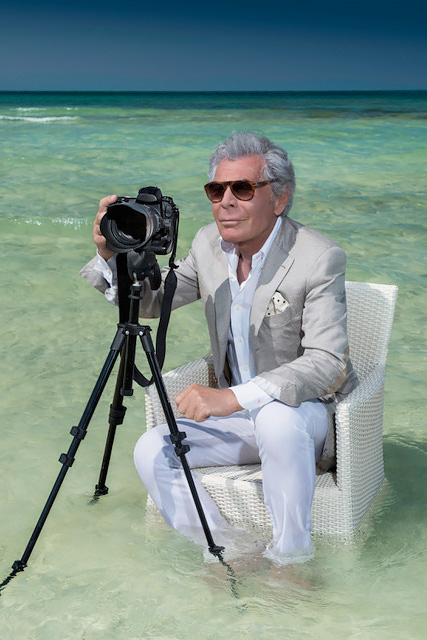French artist, Jean-Daniel Lorieux, is one of the masters of photography of his generation, earning much respect in the realm of fashion photography.
Jean-Daniel Lorieux, was born on January 21st 1937 in the 16e arrondissement of Paris.
He is the great-grandson of Théodore-Marie Lorieux, vice-president of the Conseil Général des Ponts et Chaussées and Jules Goüin. He studied engineering with the Jesuits at "L'école Arts et Métiers" in Paris and then went to the "Cours Simon". (Theatre)
He did his military service in Algeria alongside the spahis as a photographer/filmmaker - in charge of photographing the corpses of rebels slaughtered for identification in the region of Mostaganem.
For a while he worked for the Studio Harcourt as an industrial photographer and he remembers it as being a real "photographic factory" with a Stakhanovite like tempo. He has been working as a photographer for twenty years with fashion magazines like Vogue and L'Officiel. He also worked with Andy Warhol at the Factory (Andy Warhol's New York City Studio).
He launched the modeling career of Cécilia Ciganer-Albéniz (Future wife of Nicolas Sarkozy), who then became his assistant. Friend of Bernadette and Claude Chirac, he directed the poster campaign of Jacques Chirac, then Prime Minister, for the legislative elections of 1988.
Lorieux worked for the advertising campaigns of Dior, Lanvin, Rabanne, Ricci, Céline and Cardin, among others. He photographed many personalities like Jacques Chirac, Nelson Mandela, Mohamed V, Frank Sinatra, James Brown, Charles Aznavour, David Lynch, Isabelle Adjani, Claudia Cardinale, Carla Bruni, Karen Mulder, Claudia Schiffer, Linda Evangelista, Milla Jovovich...
In 2008, he worked on an exhibition on the theme "The Master and Marguerite" at the request of Russian billionaire Yevgeny Iakovlev, with Isabelle Adjani as Marguerite.
He has also released a series of books and a documentary film, retracing the atypical path of the artist and his creative pursuits. In addition to photographic creations, Jean-Daniel Lorieux produces films and paintings that parallel his distinctive style of photography, making use of sharp lines, bold colors, and his signature highly contrasted visual compositions.
His work has been exhibited worldwide but mostly in the United States and in Europe.
He is also a Knight of the Order of the Arts and Letters (1997), a knight of the Legion d'Honneur (2003) and decorated of the Maintien de l'ordre for spending two years in Algeria during the war.
Selected Books on

